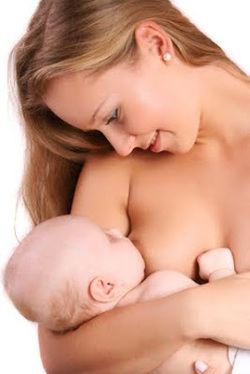
The enthusiasm generated by the expectation of a baby is indescribable and, once that little gets home, the parents, but especially the mother, is dedicated to providing care, love and education they need to develop as human beings.
One of the most important events during the first six months of lactation is small, since breastfeeding protects and strengthens the immune system (immune) baby reduces the risk of obesity, prevents food allergy and stimulates neurological development.
However, despite the good wishes of mom, this important event can become a torture, even suspended, because the breasts reach very painful injury.
http://www.stherbb.com/blog/ "Of course, problems can occur during lactation, due mainly to make baby suction feeding and engorgement of the breasts, both of which, along with others, can trigger painful cracks in the nipples"
No exaggeration to say that these skin lesions can trigger the abandonment of breastfeeding, "because it causes pain is severe and if the problem is not treated properly, can cause an infection called mastitis" The symptoms are pain and swelling in the breast, as well as appearance of red spots and hardened. If the infection progresses, there may be chills, tiredness, and raising the temperature to 40 ° C.
Change of perspective
First of all, one should not forget that breastfeeding offers great benefits, because:
* More than a million lives could be saved each year if all mothers fed their milk to their babies.
* Children who drink milk industrialized having 3 to 6 times more likely to get sick than those fed breast.
* Breast milk provides all the nutrients the baby needs (carbohydrates, proteins, fats, vitamins, minerals) but also provides enzymes that promote digestion and immunoglobulin’s that protect against disease.
* For the mother there are benefits as well. There is evidence that women who breastfeed their baby significantly reduce the risk of breast cancer.
From this point, the specialist said that "it is important that breastfeeding receive the value it deserves and that the doctor, gynecologist or pediatrician is, provide education to the mother about this. Information is required to prepare the nipples, say what to do, for example, women at risk of cracks should be advised to use dermoprotector cream, allowing successful breastfeeding. "
Even in twins or multiple pregnancies, when you have the proper education, it is possible to carry out breastfeeding. "The key is to detect problems early and, better yet, prevent them through the preparation of the mammary gland."
Thus, to prevent skin lesions of the breast can follow these tips:
* Do not apply disinfectants or alcohol, which produce dryness.
* To clean the sinuses use only water or a mild soap as too strong products can also hurt skin.
* After the bath, stop a moment breasts exposed to air. Then apply skin protection cream.
* If the doctor considers relevant or detects an inverted nipple (rather sink to excel in the breast) will be important to give them a little massage with your fingers. It is also helpful to use breast pump or breast pump and bra with cups that have holes at the height of the nipples.
* During breastfeeding, allow the baby to feed for 15 minutes or so, since more time can promote dryness.
* Feed the child frequently (8 to 12 feedings every 24 hours on average every 2 to 3 hours), since a more spaced schedule may result in the baby hungry and do suck too hard.
* If you have pain due to congestion, squeeze a little milk before feeding the baby, to encourage the flow of milk. It also helps to massage your breasts while nursing.
Now when the problem of sore nipples show, can carry out the measures already mentioned and these others:
* Feed the baby first with the least sore breast.
* Ensure that the correct breastfeeding position (the baby's face should always be in front of the breast) and the child's mouth is in a position parallel to the crack, as this seals the injury and prevents it from getting worse.
* Use lined or padded bras that have no plastic liner. Change the fill to keep the nipple dry.
* See if the baby has white spots in mouth, as it could be a yeast infection (thrush). If so, ask your pediatrician for advice to use an antifungal for the child and you.
* After feeding the small, apply some milk and let it topless for a moment. Breast milk has an epidermal growth factor and vitamins necessary for the healing of the crack.
* You can also use special cream to the nipples, and that protects the delicate skin and helps wounds recover quickly.
Breastfeeding brings benefits not only the body but also provides great psychological satisfaction due to the bond created between mother and child. I think this is reason enough to make an effort not to stop breastfeeding because of the appearance of cracks in the nipples, especially since there are effective remedies to prevent and respond.
Read more on breast enlargement product to firm larger breast. And more how to firm saggy boobs to look attractive.
 RSS Feed
RSS Feed